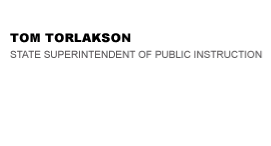November 16, 2018, Letter to SELPA/LEA Directors


Official Letter
Official Letter
Dear Special Education Local Plan Area (SELPA) Directors and Local Educational Agency (LEA) Special Education Directors:
Identification of and Provision of Service to Eligible Students in Adult County Jails
The purpose of this memo is to provide guidance on the obligation to identify and serve adults in county jails who remain eligible for special education.
-
Free Appropriate Public Education
Federal law requires that a free appropriate public education (FAPE) is available for all students with disabilities aged 3–21.i There are exceptions for: students aged 18, 19, 20, and 21 when State law specifically makes such exceptions, certain incarcerated adults, and students who have received a regular high school diploma.ii
In California, the general rule is that eligible adults age 18–21 who were enrolled in or eligible for a special education program before their 19th birthday and who have not graduated with a regular high school diploma, are entitled to receive special education and related services as identified in their Individualized Education Program (IEP).iii (This eligibility extends to age 22 under certain circumstances.)iv However, an adult in county jail, age 18 to 21, is entitled to FAPE only if, in the educational placement prior to his incarceration in the county jail: (1) he was actually identified as being a child with a disability; or (2) he had an IEP.v
-
Child Find
The Individuals with Disabilities Education Act (IDEA) requires that students who are in need of special education be identified.vi This “child find” responsibility extends to nontraditional settings or students such as highly mobile students.vii In California, local educational agencies (LEAs) must “actively and systematically” seek out all individuals with exceptional needs.viii The SELPA must submit a local plan that ensures their LEAs are in compliance with all state and federal laws, including child find.ix This responsibility includes identifying adult students in a county jail within the SELPA who remain eligible for special education services, through means such as self-reporting, interviewing, and requesting prior school records. In certain cases, the SELPA in which the county jail is located may identify an eligible adult student whose responsible LEA is located outside the SELPA. In such cases, it is recommended that the SELPA work with the sheriff and the responsible SELPA/LEA to assist the eligible adult student in contacting the responsible SELPA/LEA. This may include contacting the responsible SELPA/LEA on the eligible adult student’s behalf, and/or providing contact information for the responsible SELPA/LEA to the sheriff, and/or providing contact information for the responsible SELPA/LEA to the eligible adult student.
-
Provision of Service
After identification, as described above, it is the responsibility of the District of Residence (DOR) to provide special education and related services to an adult student in county jail who remains eligible for special education and related services and desires to receive such services.x The DOR is the district in which the student’s parents resided when the student turned 18, unless and until the parents move to a new DOR.xi
If you have any questions regarding this subject, please contact me by phone at 916-445-4602.
Sincerely,
Original signed by Kristin Wright. Hard copy of the signed document is available by contacting the Special Education Division's Director's Office at 916-445-4602.
Kristin Wright, Director
Special Education Division
i 20 U.S.C. § 1412(a)(1)(A); 34 C.F.R. § 300.101(a).
ii 20 U.S.C. § 1412(a)(1)(B)(i), (ii); 34 C.F.R. § 300.102(a)(1), (2), (3).
iii Cal. Educ. Code §§ 56026(c)(4), 56026.1.
iv Cal. Educ. Code § 56026(c)(4).
v 20 U.S.C. § 1412(a)(1)(B)(ii)(I), (II); 34 C.F.R. § 300.102(a)(2)(i)(A), (B); Cal. Educ. Code § 56040(b).
vi 20 U.S.C. § 1412(a)(3); 34 C.F.R. § 300.111(a).
vii 34 C.F.R. § 300.111(c); Cal. Educ. Code § 56301(b)(1).
viii Cal. Educ. Code § 56300.
ix Cal. Educ. Code §§ 56205(a)(3), 56301(d).
x Cal. Educ. Code § 56041; Los Angeles Unified School District v. Garcia, 741 F.3d 922, 937 (9th Cir. 2014).
xi Cal. Educ. Code § 56041(a). For conserved students, the DOR is the DOR of the conservator. Cal. Educ. Code § 56041(b).
